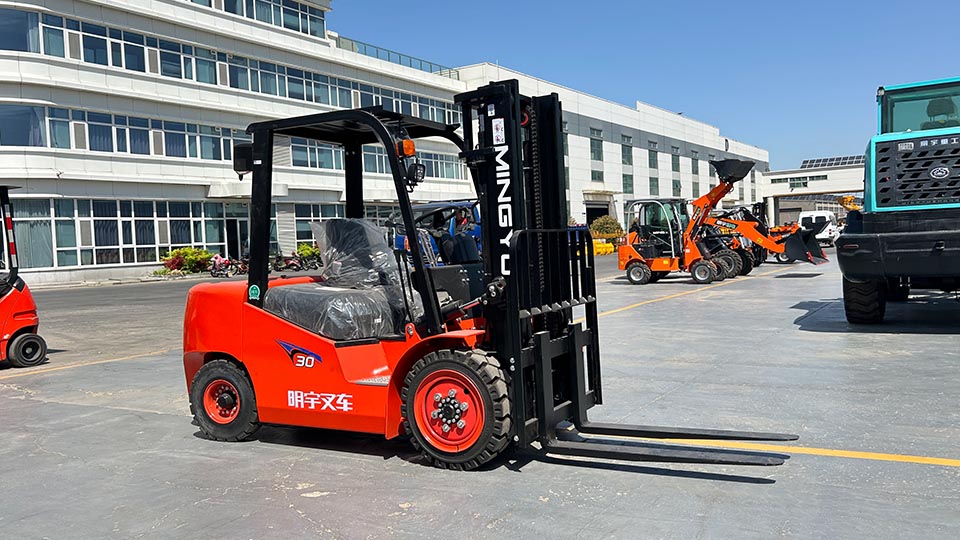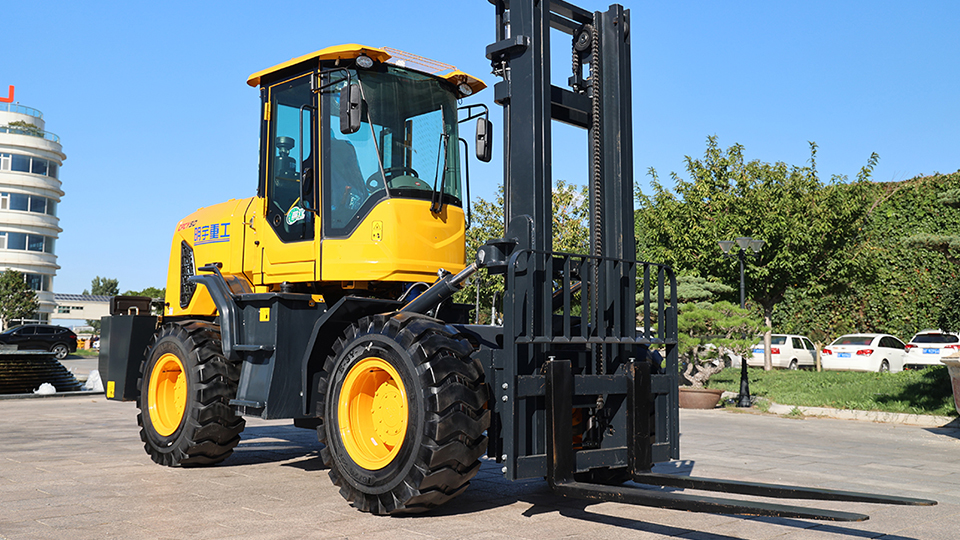
Do You Have to Be Certified to Drive a Forklift? A Technical Guide to OSHA Regulations
Operating a forklift, or a "powered industrial truck" as it is formally known, is a skilled and responsible task. The question of whether certification is required is not just a matter of company policy but a critical legal and safety issue. The definitive answer, according to the Occupational Safety and Health Administration (OSHA), is a resounding yes. In the United States, it is a federal requirement that anyone who operates a forklift in a workplace setting must be properly trained, evaluated, and certified. This article will delve into the legal framework, the technical requirements of the certification process, the roles of employers and operators, and the serious consequences of non-compliance.
The Legal Mandate: OSHA Standard 29 CFR 1910.178
The foundation of forklift operator certification in the United States is rooted in OSHA standard 29 CFR 1910.178, "Powered industrial trucks." This regulation is not merely a suggestion; it is a legally binding standard that all employers must follow. The standard is designed to prevent the thousands of injuries and hundreds of fatalities that occur each year due to forklift accidents.
The standard explicitly states in section 1910.178(l)(1)(i): "The employer shall ensure that each powered industrial truck operator is competent to operate a powered industrial truck safely, as demonstrated by the successful completion of the training and evaluation specified in this paragraph." This single sentence underscores a critical point: the responsibility for ensuring a certified workforce lies squarely with the employer.

The standard further outlines the specific components that must be included in a compliant training program:
Formal instruction: This can include lectures, discussions, videos, written materials, and computer-based learning. It covers the theoretical aspects of safe operation.
Practical training: This is the hands-on portion where a trainee operates the forklift under the direct supervision of a qualified trainer.
Evaluation: A final assessment of the operator's performance in the workplace to ensure they can competently and safely operate the equipment.
It is crucial to understand that a forklift certification is not the same as a state-issued driver's license. While a driver's license is required for operating a vehicle on public roads, it has no bearing on an individual's ability to operate a forklift in a private industrial setting. OSHA's only age requirement is that a forklift operator must be at least 18 years old.
The Technical Breakdown of the Certification Process
The certification process is a two-phase, employer-driven endeavor that ensures an operator is not only knowledgeable but also skilled and safe.
Phase 1: Formal Instruction
The formal instruction component is designed to build a foundational understanding of forklift operation. OSHA requires that this part of the training be comprehensive, covering a wide range of topics that are both general and specific to the workplace.
Vehicle-Specific Topics:
Operating instructions, warnings, and precautions: Each type of forklift has unique controls and safety features. The training must cover these specifics.
Vehicle controls and instrumentation: Operators must know the function and location of all controls, including those for steering, lifting, and lowering.
Engine or motor operation: This includes understanding the power source, whether it's an internal combustion engine or an electric motor, and the proper procedures for refueling or recharging.
Steering and maneuvering: Forklifts steer from the rear, which is a significant difference from automobiles and requires specific skills to navigate tight spaces.
Visibility: The training must address the limitations of an operator's visibility, including blind spots created by the load, and how to compensate for them.
Fork and attachment usage: Operators must be trained on the proper use of forks and any attachments, as well as their limitations.
Vehicle capacity and stability: This is one of the most critical aspects of training. Operators must understand the forklift's load capacity and how a shifting center of gravity can lead to a tip-over.
Vehicle inspection and maintenance: OSHA mandates that operators perform a pre-shift inspection of the forklift to check for any defects. Training must cover this procedure.
Workplace-Specific Topics:

Surface conditions: The training must address the specific floor surfaces, ramps, grades, and other obstacles present in the workplace.
Composition of loads: Operators need to understand the weight, size, and stability of the loads they will be handling.
Load handling and stacking: Proper techniques for picking up, transporting, and stacking loads must be taught.
Pedestrian traffic: The presence of foot traffic in the work area presents a significant hazard. Operators must be trained on how to navigate around pedestrians safely.
Narrow aisles and restricted areas: The training must prepare operators for working in environments with limited space and potential obstructions.
Online courses are a popular way to satisfy the formal instruction requirement. They provide a flexible and often cost-effective method for employees to learn the theoretical knowledge. However, it is a common misconception that an online certificate alone constitutes a full certification. It does not. The practical training and evaluation are an indispensable and non-negotiable part of the process.
Phase 2: Practical Training and Evaluation
The practical phase is where the formal instruction is put into practice. This hands-on training must be conducted in the actual work environment where the operator will be using the equipment.
Practical Training: Under the direct supervision of a qualified trainer, the employee will perform hands-on exercises that simulate their actual job duties. This is the opportunity to develop the muscle memory and practical skills needed for safe operation.
Performance Evaluation: After the training, the operator must be formally evaluated. This is not a written test; it is a direct observation of the operator's ability to safely and competently use the forklift. The evaluation must cover all the skills learned during the training, including pre-shift inspections, maneuvering, load handling, and navigating the specific workplace hazards.
The person conducting this training and evaluation must be a "qualified person," as defined by OSHA. This means they must have the "knowledge, training, and experience" to train operators and evaluate their competence.
Certification and Renewal: A Three-Year Cycle
Once an employee has successfully completed both the formal instruction and the practical evaluation, the employer must "certify" that the operator has been trained and evaluated. This certification is a record that includes the operator's name, the dates of the training and evaluation, and the name of the person who conducted them. Many employers issue a wallet-sized certification card as a convenient way to document this.
The certification is not permanent. It is valid for three years. At the end of this period, the operator must undergo a refresher evaluation to ensure their skills are still up to par. Refresher training is also required in other situations, such as:
The operator is involved in a forklift accident or near-miss incident.
The operator is observed to be operating the forklift in an unsafe manner.
The operator is assigned to operate a different type of forklift.
Changes in the workplace environment could affect the safe operation of the equipment.
The High Cost of Non-Compliance
The legal requirement for forklift certification is a serious matter, and the penalties for non-compliance are severe. A lack of proper certification can result in hefty fines from OSHA, which can run into thousands of dollars per violation. The severity of the fine depends on whether the violation is classified as serious, willful, or other-than-serious.
Beyond the financial penalties, the human cost of a forklift accident is immeasurable. The failure to certify an operator can lead to:
Injuries and fatalities: The most tragic consequence of improper training.
Property damage: Forklift accidents can cause significant damage to equipment, products, and the facility itself.
Legal liability: An employer can be held liable for civil and even criminal charges in the event of an accident involving an uncertified operator.
Increased insurance premiums: A history of accidents and safety violations will likely result in higher insurance costs for the business.
In conclusion, the question of whether certification is required to drive a forklift has a clear and unequivocal answer: yes. It is not an optional suggestion but a legal mandate designed to protect workers and maintain a safe and productive workplace. The process, while requiring a commitment from both the employer and the employee, is a vital investment in safety that pays dividends by preventing accidents, saving lives, and ensuring legal compliance.
Name: selena
Mobile:+86-13176910558
Tel:+86-0535-2090977
Whatsapp:8613181602336
Email:vip@mingyuforklift.com
Add:Xiaqiu Town, Laizhou, Yantai City, Shandong Province, China